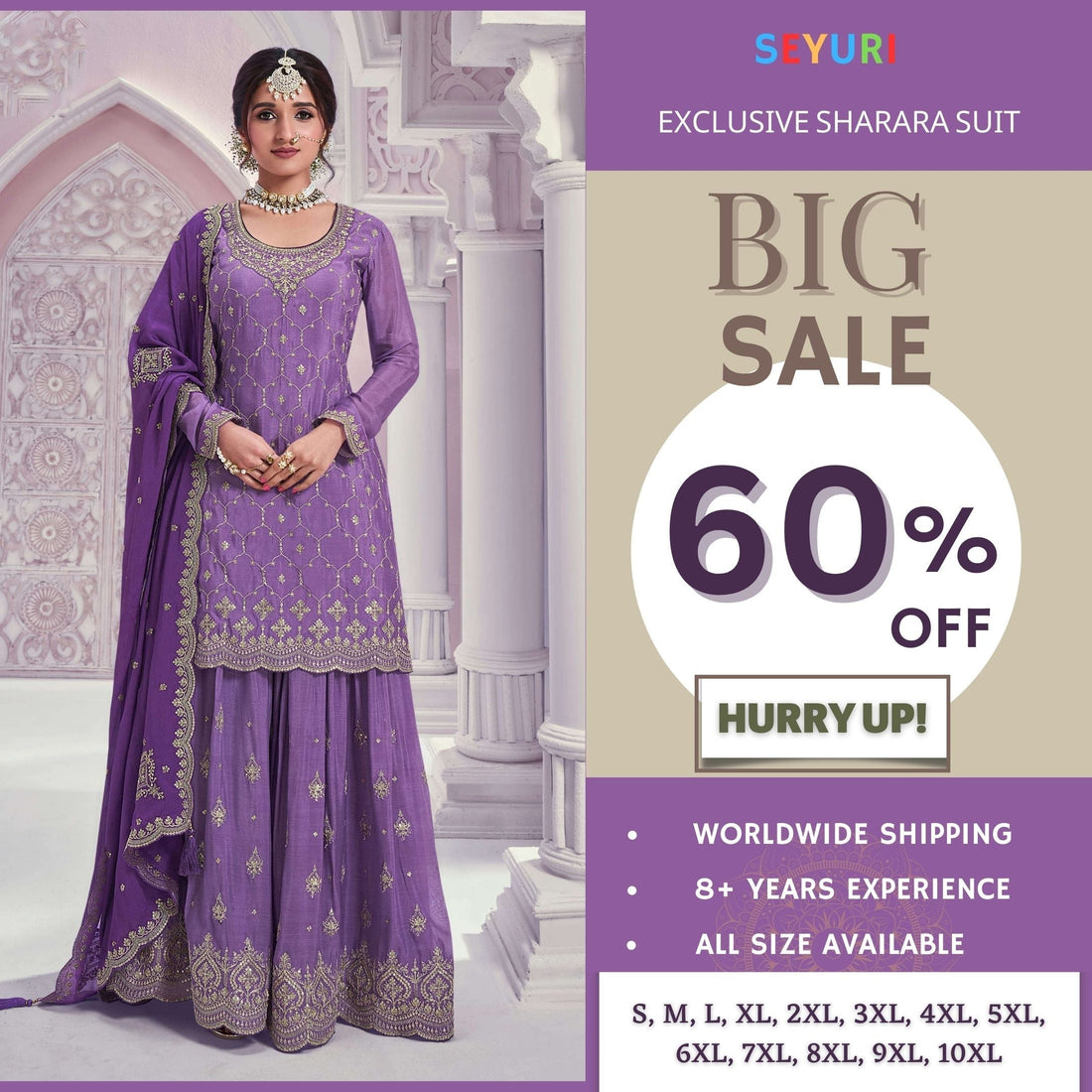
An Overview of Sharara Suits' Evolution and History
Indian fashion has made sharara suits a mainstay thanks to its grace, comfort, and adaptability. These ensembles capture the spirit of traditional craftsmanship while embracing modern trends thanks to their rich background and innovative adaptations. To comprehend the continued allure of sharara suits, let's examine their development over time.
1. Historical Roots

The sharara's inception can be attributed to the Mughal period in India, when nobility and royalty donned them. The Persian language is where the word "sharara" originates, and it means "to flow." This perfectly captures the silhouette of the ensemble, which is defined by flared pants with wide legs that mimic a flowing skirt. Traditionally, shararas were appropriate for formal events since they were fashioned of opulent materials like silk and embellished with detailed embroidery.
Early on, women of high status liked the regal appearance that resulted from wearing shararas coupled with short kurtas or embroidered shirts. With intricate motifs that denoted wealth and sophistication, this combination highlighted the opulent textiles and artistic talent of the era.
2. Cultural Significance
Many Indian regions, especially the Muslim community in North India, place a high cultural significance on sharira outfits. They are frequently worn to weddings, festivals, and other special occasions, and they represent happiness and celebration. Because of its distinctive style, the outfit is quite comfortable to move in and is perfect for events that involve dancing and festivities.
Sharara suits, when combined with other traditional clothing, are another example of a merging of Indian and Persian influences. Their attractiveness is enhanced by their cross-cultural background, which makes them a favorite of people who value both tradition and modernity.
3. Evolution Over Time
The sharara suit changed along with the changes in clothing. In the late 20th century, shararas made a revival, fueled by a growing interest in traditional dress among younger generations. Designers started experimenting with cuts, materials, and styles, which led to an abundance of modern variants.
Modern Interpretations
Modern sharara suits come in a variety of forms, ranging from elaborately embroidered versions for nuptials to more understated types for everyday occasions. They frequently create a beautiful silhouette when worn with long, flowing dupattas. The use of lightweight fabrics like georgette and chiffon has made sharara suits more affordable and comfortable, catering to varied tastes and circumstances.
Color and Print Trends

While modern shararas encompass a wide palette, including pastels and brilliant hues, classic shararas are typically seen in rich, deep tones. Intricate embroidery, digital printing, and floral patterns have also gained popularity, enabling wearers to exhibit their individual styles without detracting from the traditional origins of the ensemble.
4. Current Trends and Popularity
In recent years, sharara suits have garnered great appeal in the fashion business, thanks to social media and celebrity sponsorships. At events, shararas are frequently worn by fashion icons and influencers, who highlight its attractiveness and adaptability. The demand for sharara suits has increased dramatically as a result of this exposure, and designers are always coming up with new ideas to appeal to a younger clientele.
Sustainable Fashion
Many designers are now concentrating on eco-friendly materials and moral production methods due to the growth of sustainable fashion. Because of this trend, traditional craftsmanship is seeing a resurgence as more and more people are looking to artists to make genuine sharara suits that honor cultural traditions while also being environmentally conscious.
5. Styling Your Sharara Suit
It can be enjoyable and innovative to style a sharara suit. The following advice will help you look better:
Select the Correct Top: To get a well-proportioned silhouette, team your sharara with a chic kurta, crop top, or long jacket.
Choose Your Accessories Wisely: To add flair to your ensemble, go for statement pieces like choker necklaces or jhumkas. Additional elegance can also be added with a matching dupatta.
Footwear Matters: Depending on the occasion, classic juttis or contemporary heels can enhance your appearance.
Play Around with Colors: Don't be afraid to combine different hues and patterns to create a one-of-a-kind look that expresses your individuality.

